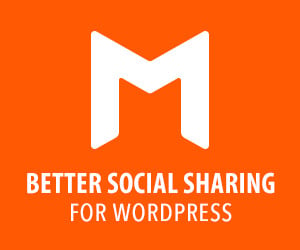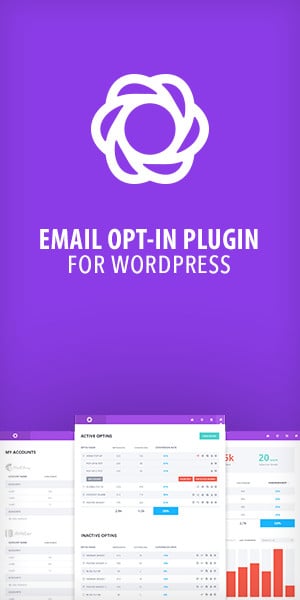Human resource management is the backbone of any organization, responsible for recruitment, training, and employee well-being. Essential for fostering a productive work environment, effective HR management can reduce employee turnover by up to 50%. This guide will explore the vital roles, strategies, and tools that make human resource management an indispensable part of organizational success. Providing insights into how HR professionals can impact business outcomes and create a thriving company culture.
Introduction to Human Resource Management
Human Resource Management (HRM) is the backbone of any organization, playing a crucial role in its success. It focuses on optimizing employee performance and ensuring the company reaches its goals. This section delves into the definition, importance, and key functions of HRM, providing insights into how it contributes to organizational success.
Definition and Importance of HRM
HRM is the strategic approach to managing people within an organization. It involves recruiting, training, and evaluating employees to maximize their contributions. The importance of HRM cannot be overstated as it helps align the workforce with the organization’s objectives. Effective HRM ensures employee satisfaction, reduces turnover, and boosts productivity.
HRM also plays a pivotal role in cultivating a positive work culture. By fostering communication and collaboration, it enhances employee engagement. Organizations with strong HRM practices often experience higher morale, leading to better overall performance.
Key Functions of Human Resource Management
HRM encompasses several core functions essential for organizational operations:
- Recruitment and Selection: Attracting and hiring the right talent.
- Training and Development: Providing opportunities for skill enhancement.
- Performance Management: Evaluating and improving employee performance.
- Compensation and Benefits: Structuring competitive salary packages.
- Employee Relations: Maintaining a harmonious workplace environment.
Each function is interconnected, contributing to a well-rounded HRM strategy.
The Role of HRM in Organizational Success
HRM’s role in organizational success is multifaceted. It ensures that the right people are in the right positions, fostering a skilled and motivated workforce. By implementing robust training programs, HRM enhances employee competencies, allowing the organization to adapt to market changes.
Moreover, effective performance management systems align individual objectives with organizational goals. This alignment boosts productivity and helps achieve strategic targets. HRM also fosters a culture of continuous improvement, driving innovation and long-term success.
Core Functions of Human Resource Management
The core functions of HRM are the building blocks of a successful organization. They involve strategies that attract, develop, and retain talent, ensuring a capable and motivated workforce. This section explores recruitment, training, and performance management, highlighting their impact on employee growth and organizational success.
Recruitment and Selection Strategies
Recruitment and selection are critical HRM functions. They focus on attracting and choosing the right talent to meet organizational needs. Effective recruitment strategies involve:
- Identifying job requirements and creating clear job descriptions.
- Utilizing multiple channels like job boards, social media, and employee referrals.
- Implementing a structured selection process with interviews and assessments.
- Promoting diversity and inclusion in hiring practices.
These strategies ensure that the organization hires individuals who align with its values and goals.
Selection processes should be thorough yet efficient, minimizing bias and ensuring fair evaluations. A well-structured onboarding process further integrates new hires, setting them up for success from day one.
Training and Development Solutions
Training and development are vital for employee growth and organizational advancement. They provide opportunities to acquire new skills and enhance existing ones. Key aspects of effective training programs include:
- Assessing training needs through performance evaluations and employee feedback.
- Offering a mix of on-the-job training, workshops, and e-learning options.
- Encouraging continuous learning and professional development.
- Evaluating training effectiveness through feedback and performance improvements.
These initiatives boost employee competencies, driving innovation and adaptability. An organization that invests in employee development often sees higher retention rates and increased job satisfaction.
Performance Management and Employee Evaluation
Performance management is integral to HRM, focusing on evaluating and improving employee performance. Effective systems involve setting clear goals, providing regular feedback, and conducting formal evaluations. Key components include:
- Establishing performance metrics aligned with organizational objectives.
- Conducting regular one-on-one meetings for feedback and support.
- Implementing development plans for performance improvement.
- Recognizing and rewarding high achievers.
These practices ensure that employees remain motivated and engaged. By aligning individual goals with organizational targets, performance management drives productivity and success.
Modern Trends and Challenges in HRM
The landscape of HRM is ever-evolving, with new trends and challenges shaping the way organizations operate. Embracing these changes is crucial for staying competitive and fostering a dynamic work environment. This section examines the impact of technology, diversity, and remote work on HRM.
Impact of Technology on Human Resource Management
Technology has transformed HRM, offering innovative solutions for efficiency and engagement. Key technological advancements include:
- HR Software: Automates administrative tasks and streamlines processes.
- Artificial Intelligence (AI): Enhances recruitment through data-driven insights.
- Employee Self-Service Portals: Empowers employees with access to personal information and resources.
- Virtual Reality (VR): Provides immersive training experiences.
These technologies improve decision-making and foster a more connected workplace. However, integrating technology presents challenges such as data privacy concerns and the need for continuous upskilling.
Addressing Diversity and Inclusion in the Workplace
Diversity and inclusion are essential for a thriving workplace. They promote varied perspectives, driving innovation and creativity. HRM plays a pivotal role in fostering an inclusive environment through:
- Implementing unbiased recruitment and promotion practices.
- Providing diversity training and awareness programs.
- Encouraging open dialogue and feedback from employees.
- Establishing employee resource groups for underrepresented groups.
An inclusive workplace boosts employee morale and enhances team collaboration. Organizations that prioritize diversity often see improved problem-solving and decision-making capabilities.
Navigating Remote Work and Flexible Work Arrangements
The rise of remote work has altered traditional workplace dynamics, presenting new challenges for HRM. To adapt, organizations can implement strategies such as:
- Establishing clear communication channels and expectations.
- Providing remote work tools and resources for employees.
- Encouraging work-life balance through flexible scheduling.
- Fostering virtual team building and collaboration activities.
Flexible work arrangements offer benefits such as increased productivity and employee satisfaction. HRM must navigate these challenges to ensure seamless operations and a supportive remote work culture.
Conclusion
Human Resource Management (HRM) is crucial for organizational success, focusing on acquiring, training, and retaining employees. It encompasses key functions like recruitment, training, performance management, and employee evaluation. HRM’s role is to align employee goals with organizational objectives, enhancing productivity and efficiency. Modern HRM faces challenges like leveraging technology, promoting diversity, and managing remote work. These elements are essential for adapting to evolving workplace dynamics and ensuring overall organizational performance.
FAQ
What are the primary functions of human resource management?
Human resource management focuses on recruitment, training, performance evaluation, and employee relations. It also involves managing compensation, benefits, and ensuring compliance with labor laws. These functions aim to enhance workplace productivity and employee satisfaction.
How does human resource management contribute to organizational success?
HR management plays a crucial role in aligning human resources with business goals. It fosters a positive work environment, enhances employee engagement, and aids in talent retention, all contributing to achieving organizational objectives efficiently.
What is the role of technology in modern human resource management?
Technology streamlines HR processes through automation, data analytics, and cloud-based solutions. It enhances recruitment, performance tracking, and employee engagement while allowing HR professionals to focus on strategic tasks.
How do human resource management practices impact employee retention?
Effective HR practices, such as clear communication, career development opportunities, and competitive benefits, boost retention. They create a supportive work environment that encourages employees to stay and grow within the organization.
What are the key challenges faced by human resource management today?
HR faces challenges like adapting to remote work, managing diversity and inclusion, and keeping up with technological advancements. Additionally, navigating changes in labor laws and addressing skill gaps are significant concerns.
How does human resource management handle employee training and development?
HR develops training programs aligned with business needs, providing resources for skill enhancement and career progression. Utilizing workshops, e-learning, and mentorship, HR supports ongoing professional development.




